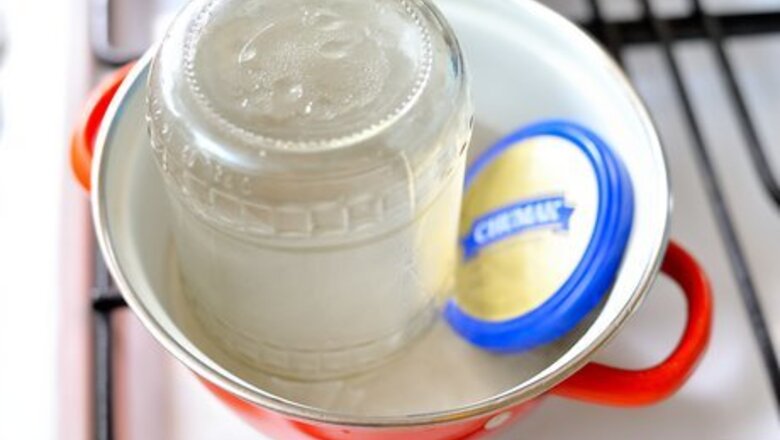
views
Combining the Ingredients
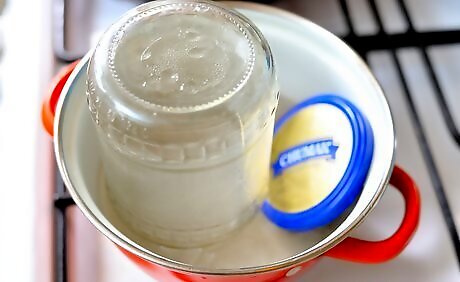
Sterilize your equipment. To make a large batch of tej, you'll need a wide-mouthed, 1-gallon (3.8-L) glass jar with a lid. Wash the lid and jar in the sink with hot, soapy water. Rinse them with clean water, and then dry them with a towel. Place them on a baking sheet and transfer them to a preheated 225 F (107 C) oven for 20 minutes. After 20 minutes turn off the heat and leave the jar and lid there until you're ready to make your wine. It’s important to sterilize your equipment before starting, otherwise harmful bacteria could grow in the wine.
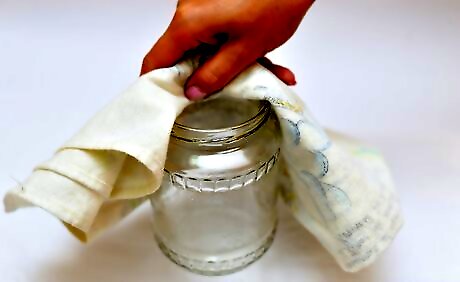
Remove the jar from the oven. When it’s time to make your wine, use oven mitts to grab the jar and pull it out of the oven. Set the jar on a heat-proof mat and allow it to cool for a few minutes; otherwise, the cool liquid could crack it. Leave the lid in the oven for now.
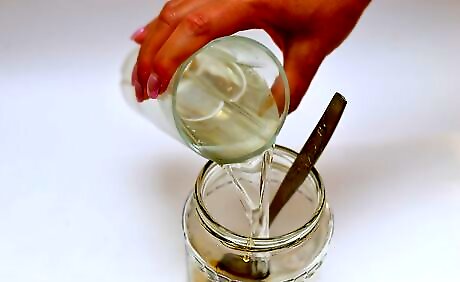
Combine the honey and water. Once the jar has had a few minutes to cool, pour the water and honey into it and stir the mixture with a large spoon. To make a larger or smaller batch of tej, use a three-parts water to one-part honey ratio, and adjust the other ingredients accordingly. When you're done stirring, the liquid should be a golden amber color.
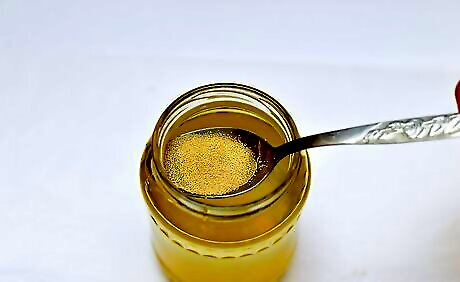
Stir in the yeast. Sprinkle the yeast over the honey and water mixture. Use your large spoon to stir the yeast into the liquid. Any type of brewer’s yeast will do, but if possible, look for the species Saccharomyces cerevisiae, which is the yeast species that naturally grows in most tej batches. Tej is traditionally made by allowing wild yeast to accumulate in the mixture to ferment the wine. Because you can't control the kind of yeast this way, it’s becoming more common to add yeast instead, as this ensures the batch won’t become contaminated. To make tej without the addition of extra yeast, simply omit this step and add the gesho.
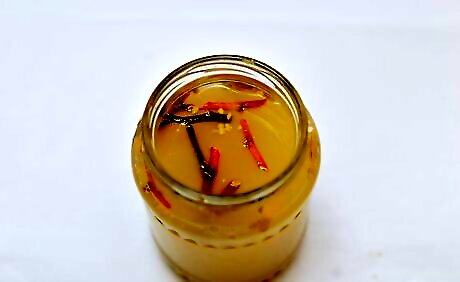
Add the gesho. Sprinkle the gesho on top of the mixture. Press it down with your spoon to saturate the gesho with the liquid. Stir the mixture to completely soak the gesho and incorporate it into the honey and water mixture. Gesho comes in two forms, which are entchet and kitel. Entchet is the bark from the buckthorn tree, and kitel are the dried leaves. Entchet is ideal because it’s easier to remove during fermentation, but you can use either in your tej.
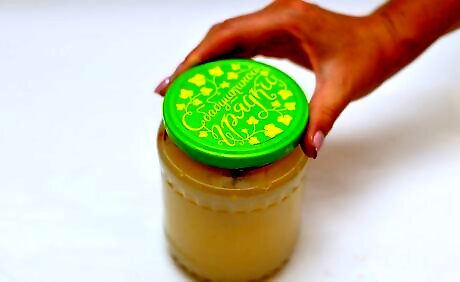
Cover the container. Once all of the ingredients have been added, remove the lid from the oven. Be careful, as it may still be hot. Place the lid on top of the jar, but don’t seal it. You want the lid on loosely to keep out bugs, but you don’t want it airtight. If your lid doesn’t keep out insects, cover the mouth of the jar with wax paper or cheesecloth before putting the lid on.
Fermenting the Tej
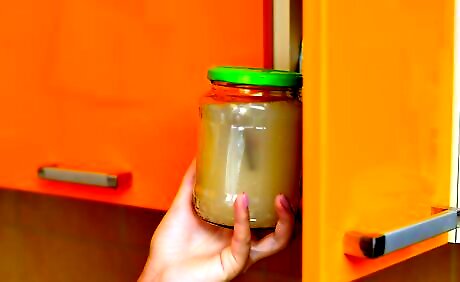
Place the jar somewhere dark and room temperature. The ideal temperature range for fermentation is between 70 and 75 F (21 and 24 C). Any cooler and the yeast may go dormant, and any hotter and the yeast may die. Sun can also affect the temperature and fermentation process, so store your jar in a pantry or cupboard during fermentation.
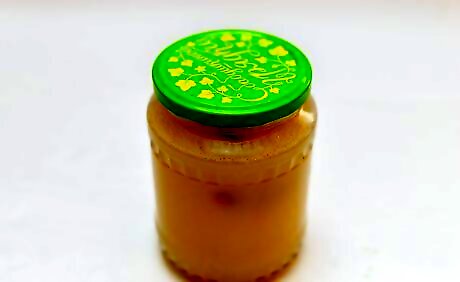
Watch for bubbles. During the first three to four days of fermentation, bubbles will start to form on the top of the mixture. Eventually, these bubbles will become a foamy layer. This is the yeast converting the sugar into alcohol.
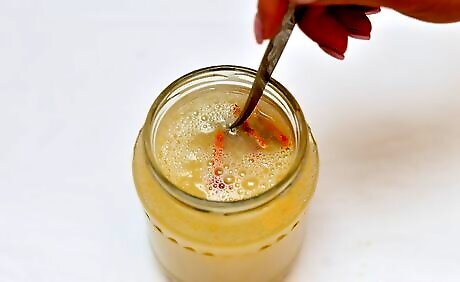
Stir the mixture after a week if you didn’t add extra yeast. When tej ferments using natural yeast, a fuzzy mold will start to grow on the gesho within two to three days. Let this fuzz continue to grow and develop. After seven days, stir the mixture to incorporate the mold on the gesho into the liquid. You don’t need to stir your tej if you added brewer’s yeast to the mixture. Commercial brewer’s yeast will prevent the mold from growing on the gesho, so stirring is unnecessary.
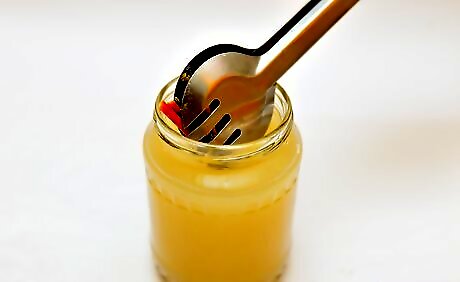
Remove the gesho after 10 days. Stir the tej and then use a pair of tongs to remove all of the gesho from the jar. Discard the gesho. To remove gesho leaves, strain the mixture through cheesecloth into a large bowl. Return the strained mixture to the glass jar. Place the lid back on the jar and return it to the pantry to continue fermenting.
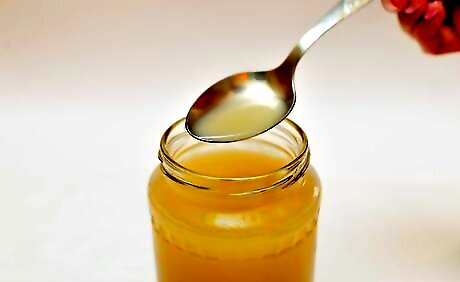
Taste the tej after three weeks. Tej typically takes anywhere from 21 to 35 days to ferment, but 28 days is usually ideal. After three weeks, remove half an ounce (15 ml) of liquid from the jar and taste it. Tej should taste sweet but alcoholic. At this point, the mixture will probably be too sweet and will need more time to ferment. Replace the lid and return it to the pantry for another week. Tej fermented with wild yeast may need up to five weeks to ferment. As long as the mixture continues to bubble, the fermentation is still going.
Finishing the Tej
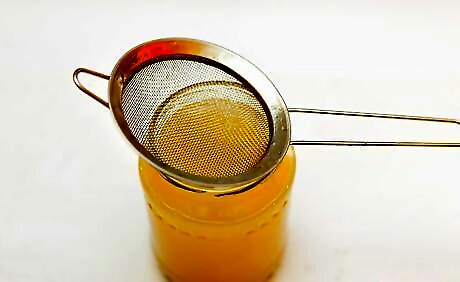
Strain the mixture after 28 days. When the tej has fermented and is strong enough for your liking, line a fine-mesh strainer with cheesecloth and place the strainer over a large pitcher. Strain the tej through the cheesecloth and into the pitcher below. This will remove sediment and any leftover gesho. Straining the tej into a pitcher will make bottling easier, but you can also pour it into a large bowl instead.
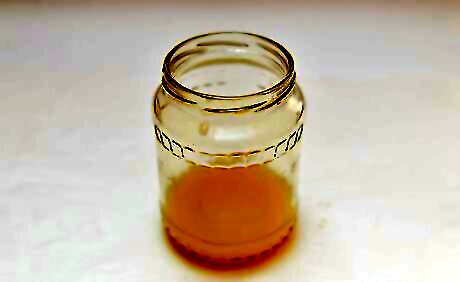
Let the sediment settle. After straining the tej and stopping the fermentation process, sediment will begin to form on the bottom of the tej. To allow this to happen, transfer the pitcher of tej to the refrigerator for two days before bottling. You can skip this step if you don’t mind lots of sediment in the bottom of your tej bottles.
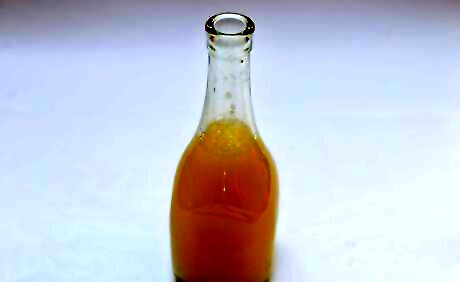
Bottle the tej. After two days in the refrigerator, it’s time to bottle the tej. Slowly pour the tej from the pitcher into sterilized bottles. To make the process easier, place a funnel into the mouth of the bottle. Pour very slowly to ensure the sediment remains at the bottom of the pitcher. You can use any glass bottles for the tej, including old wine, beer, spirit, or pop bottles.

Enjoy the tej cold. Once the tej has been bottled, transfer the bottles to the refrigerator. Store the tej in the refrigerator and serve it chilled. You can enjoy tej on its own, pair it with spicy foods, or have a glass with your dessert.



















Comments
0 comment